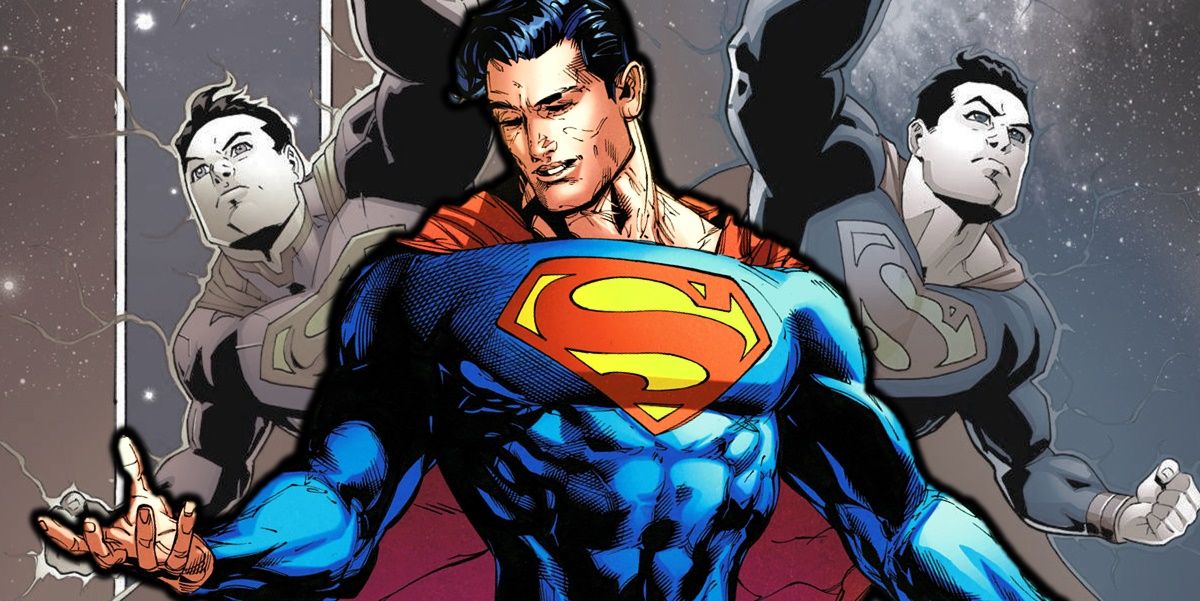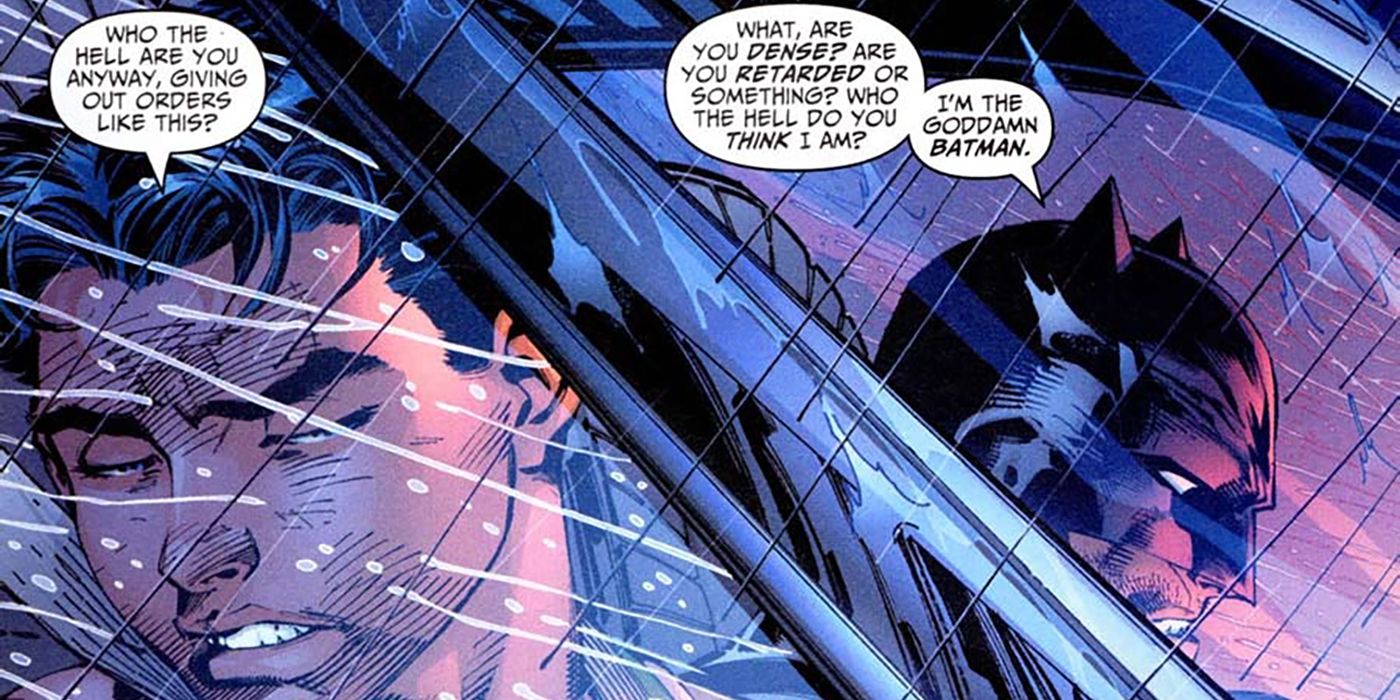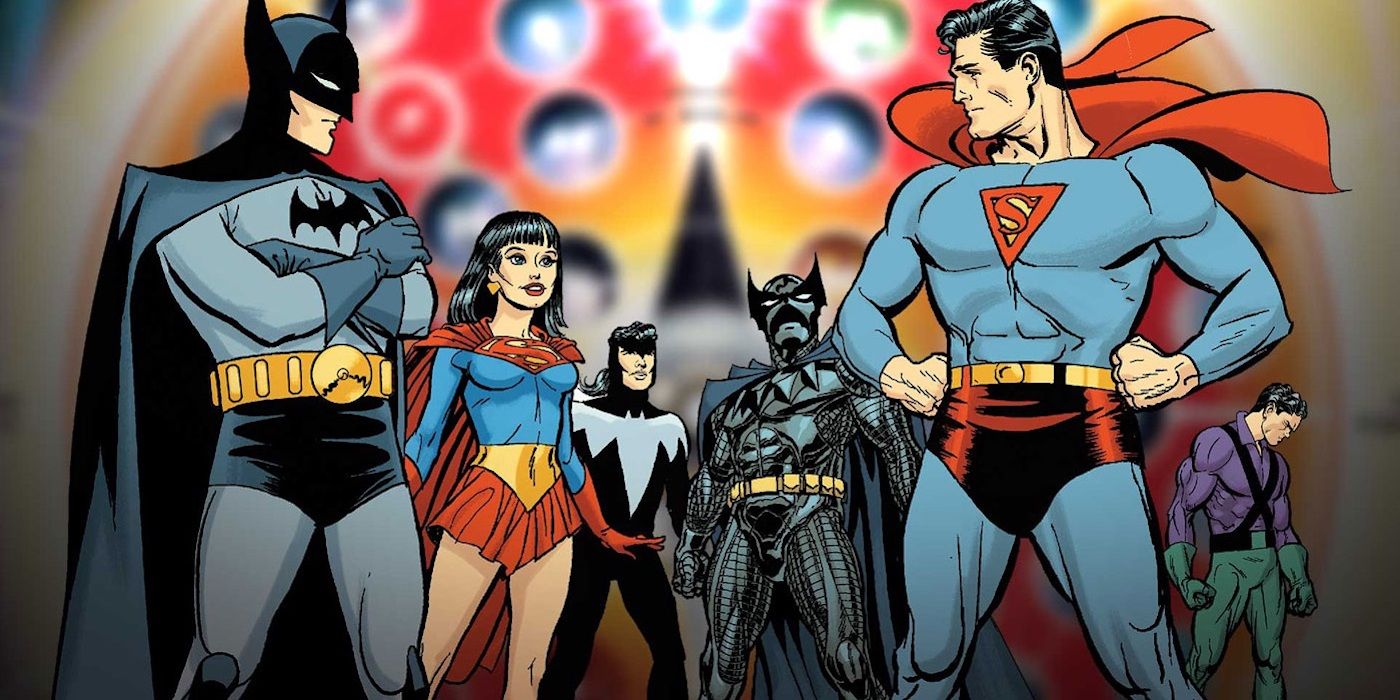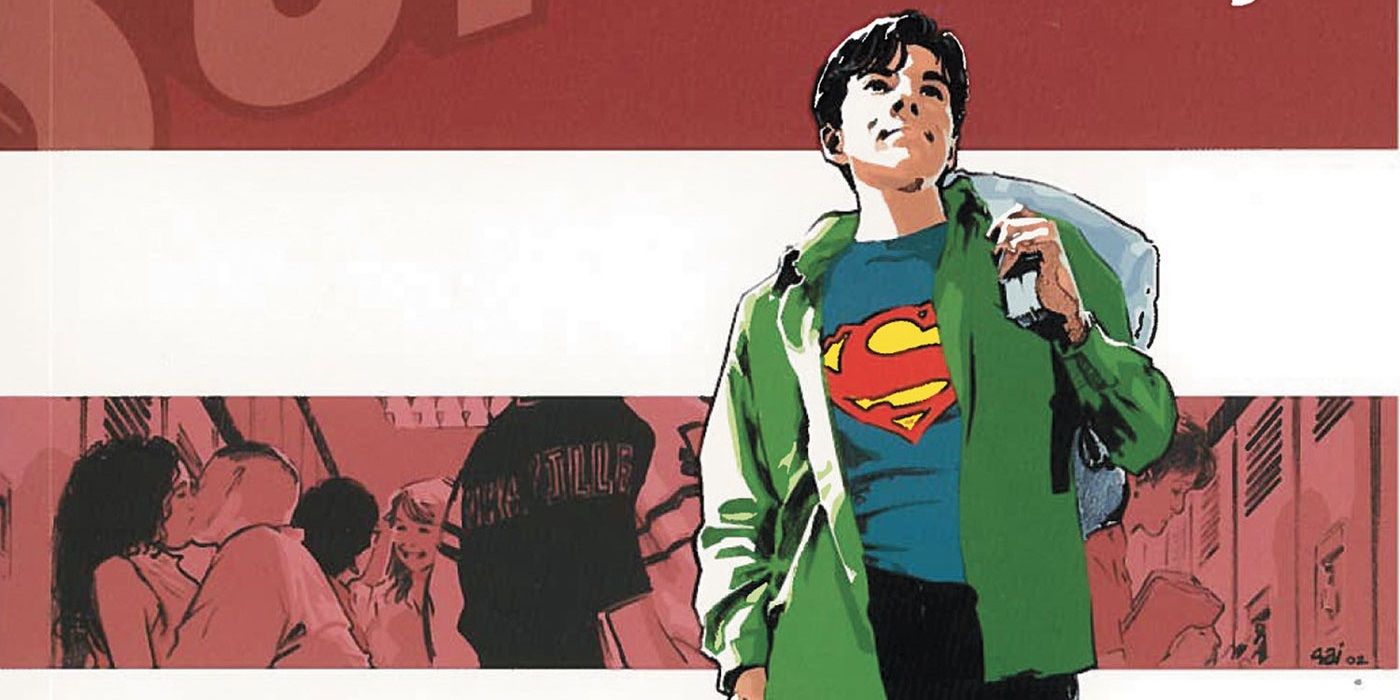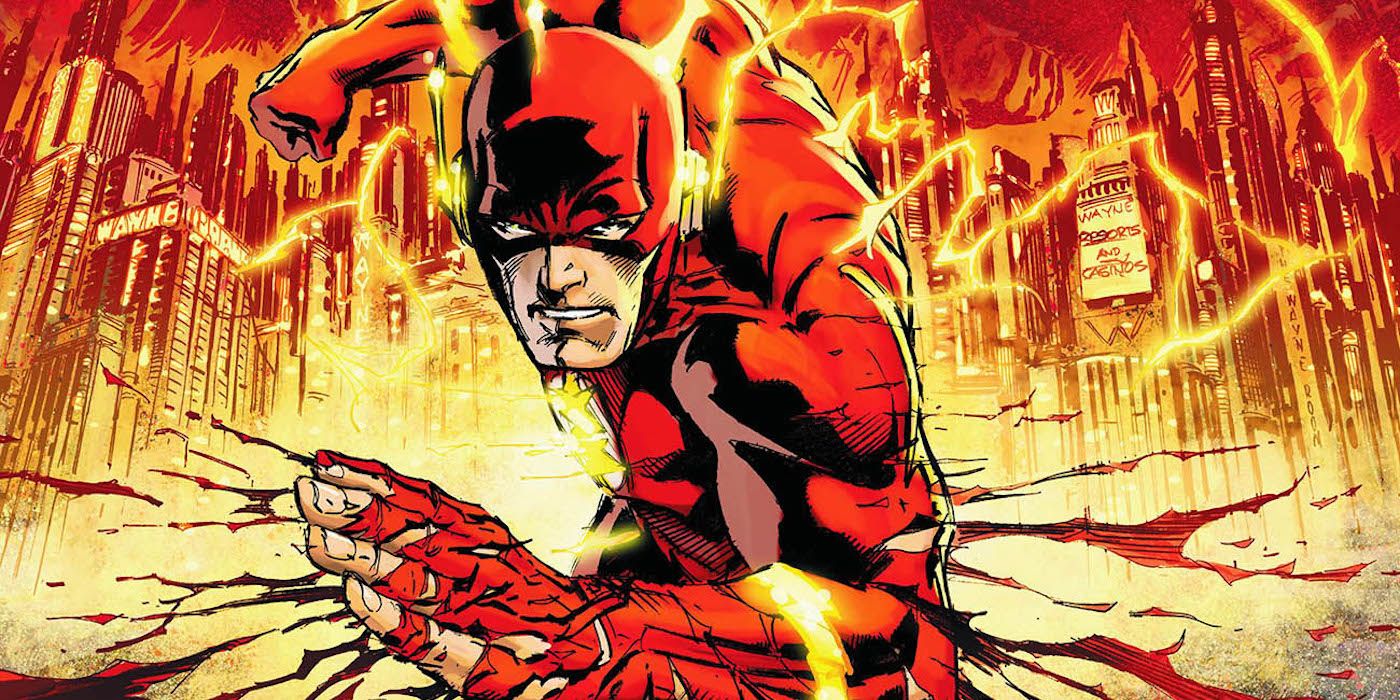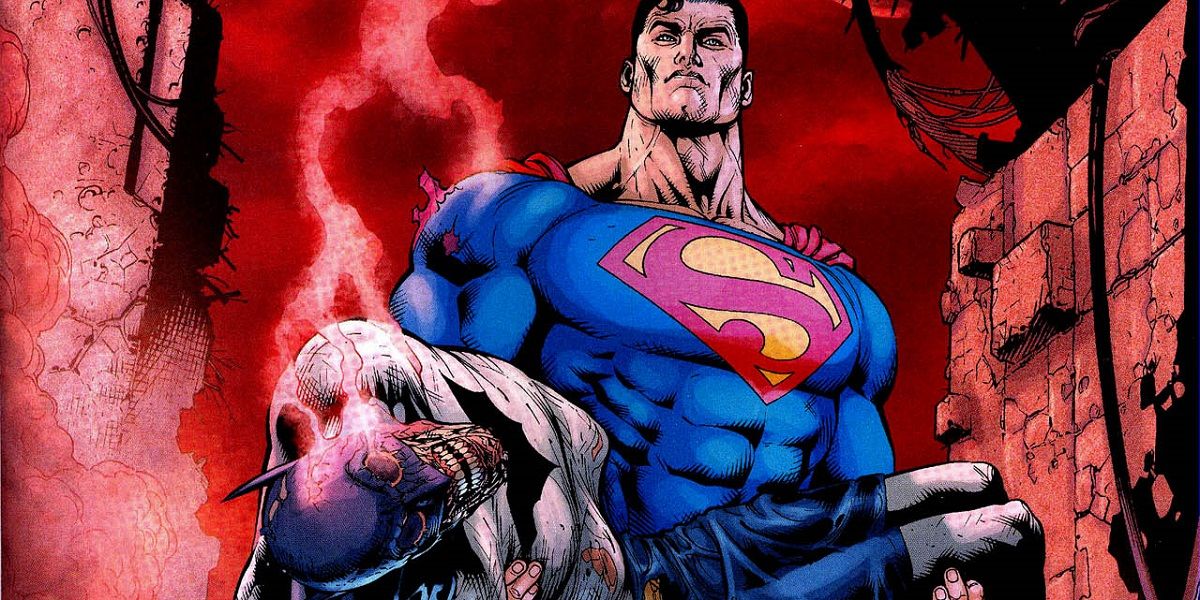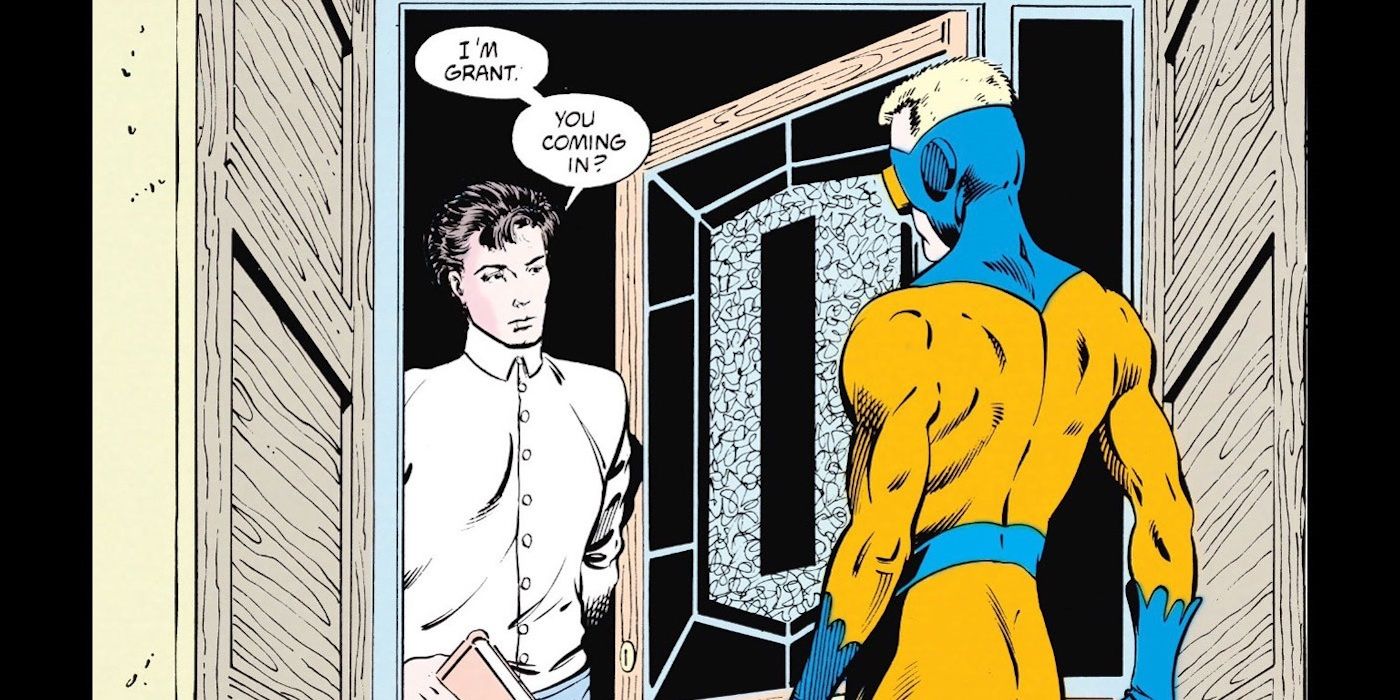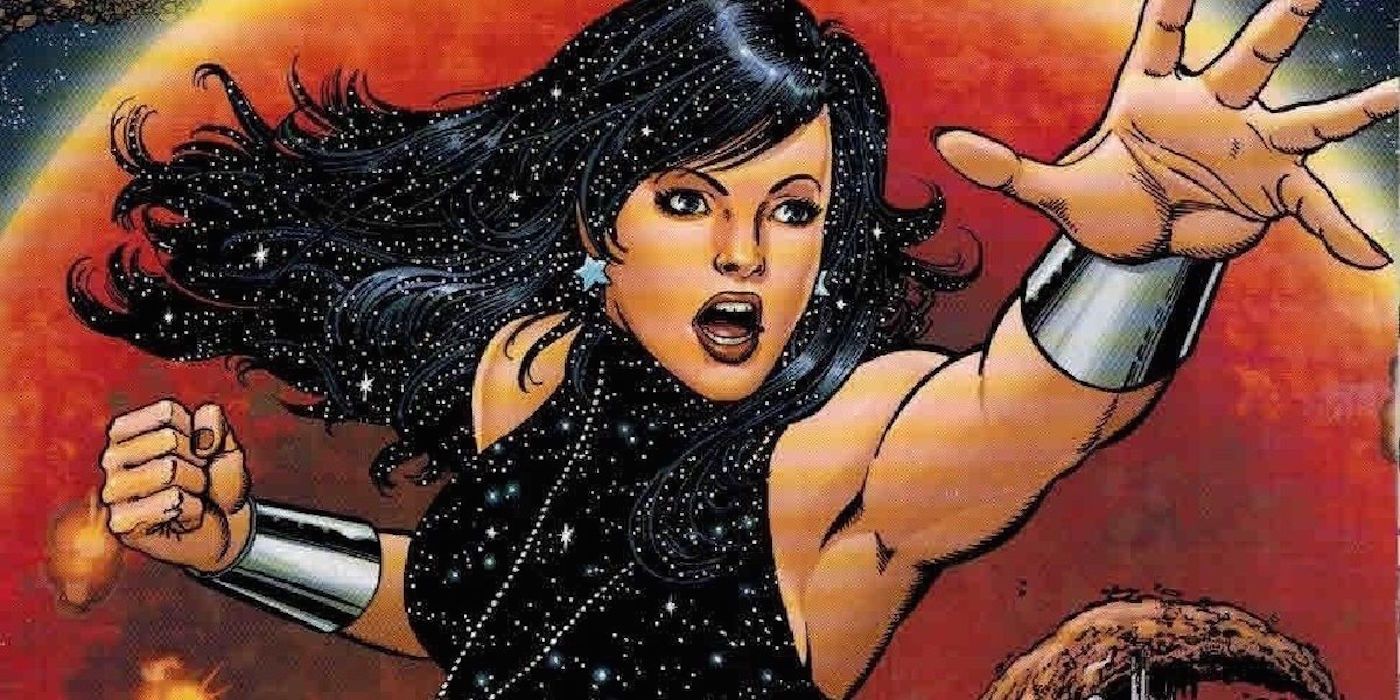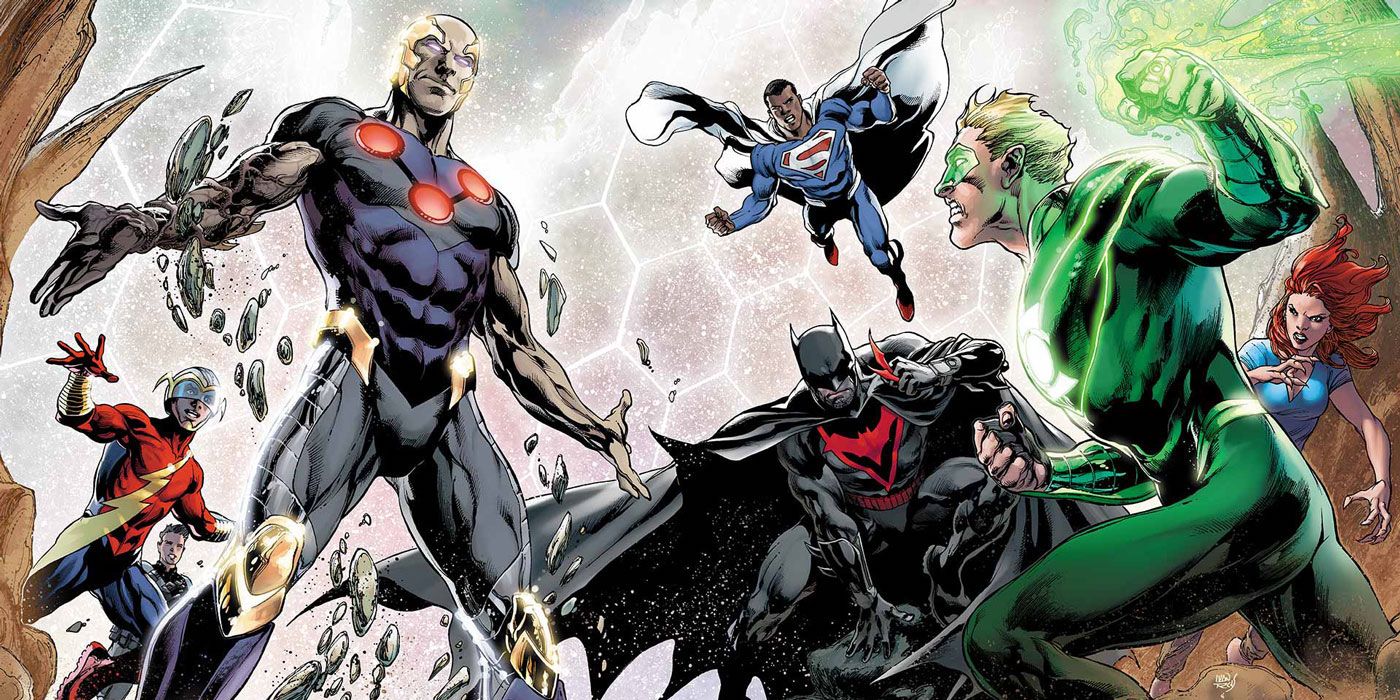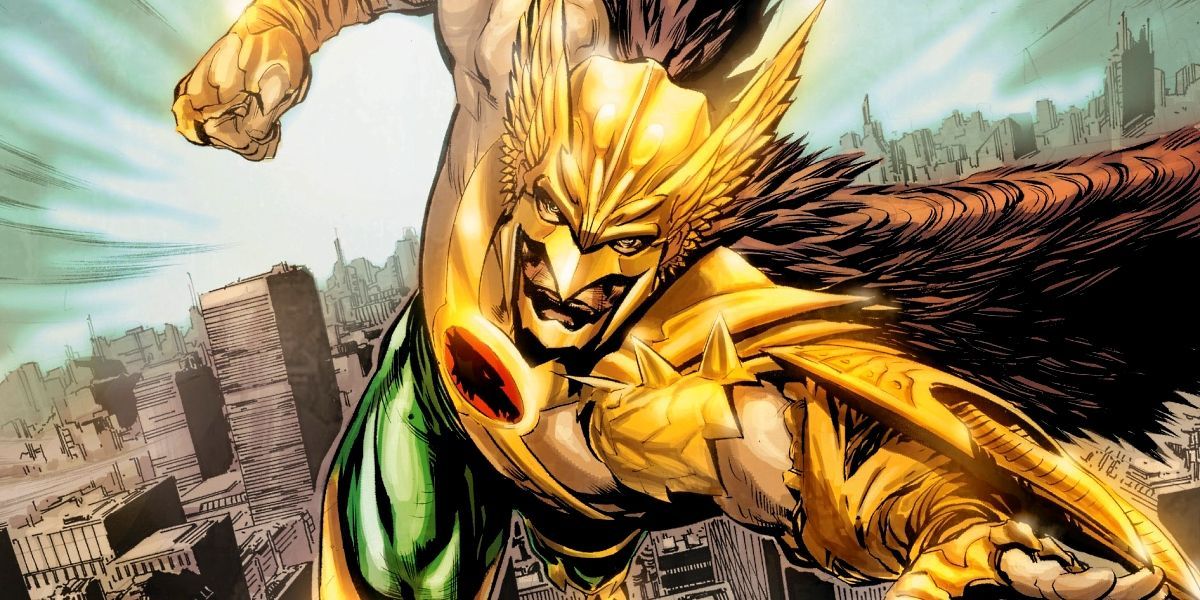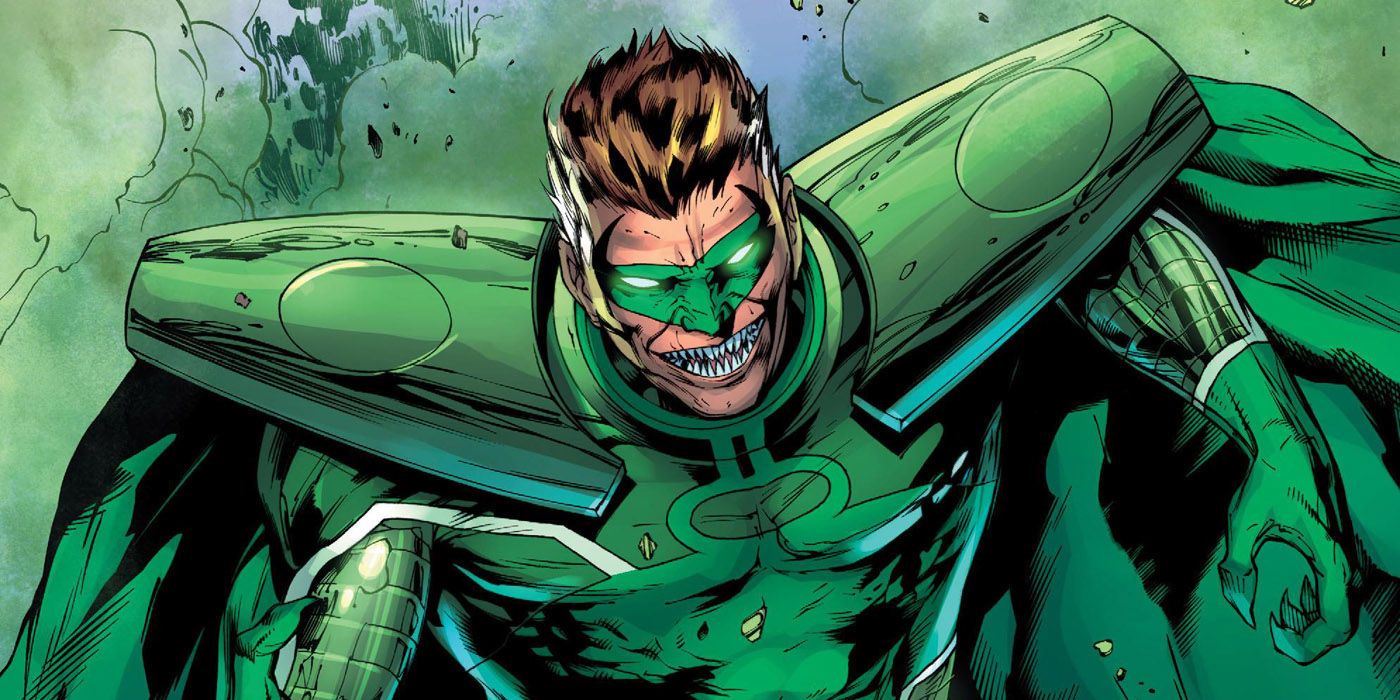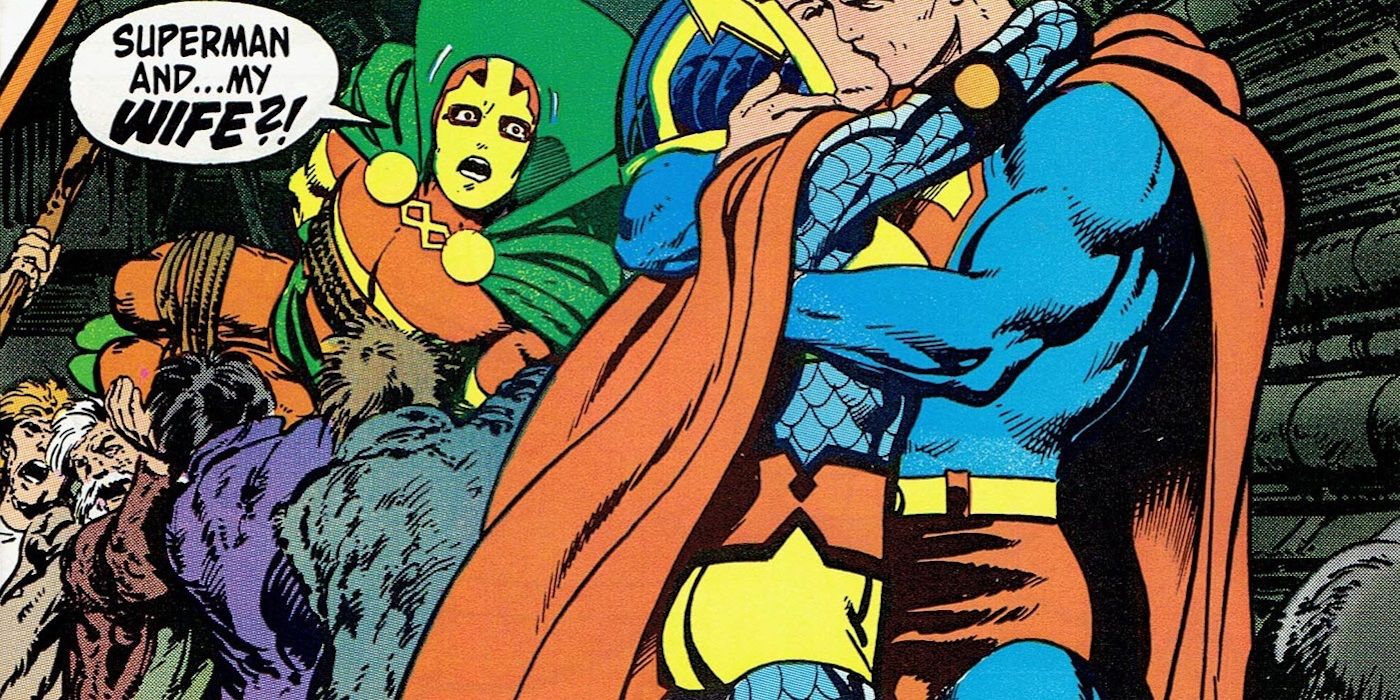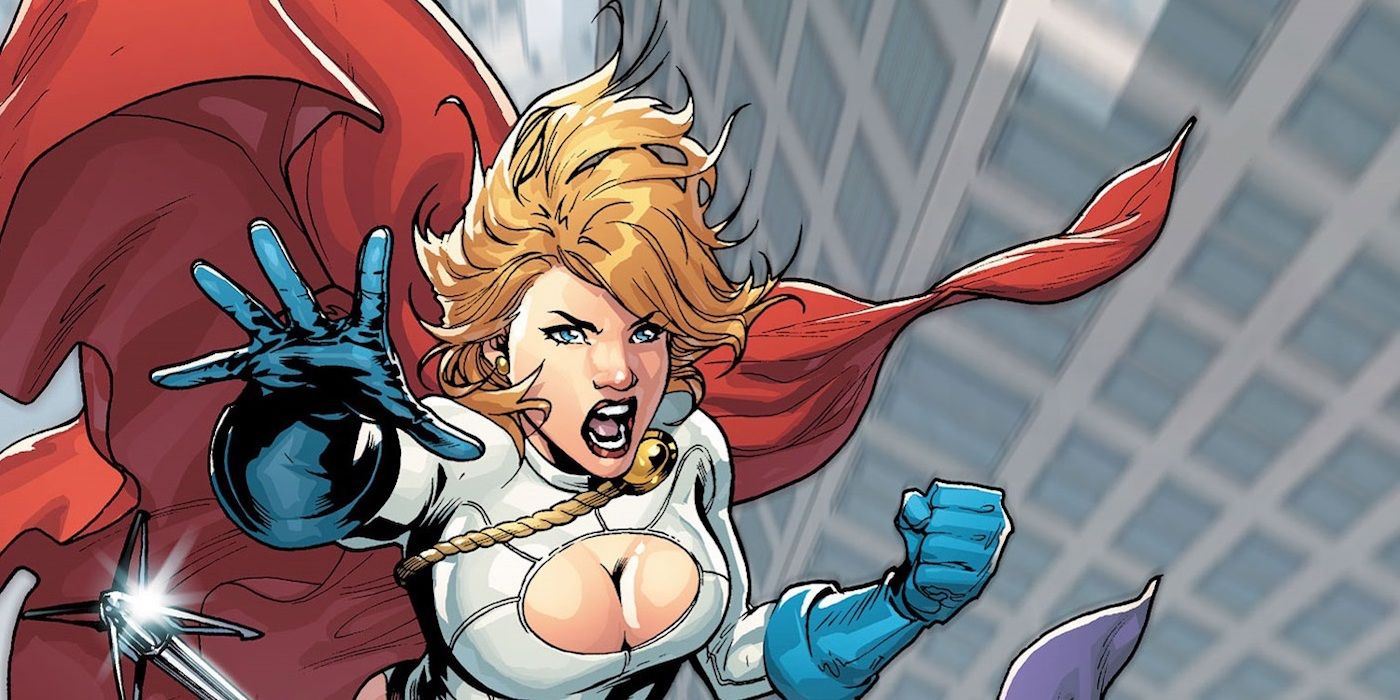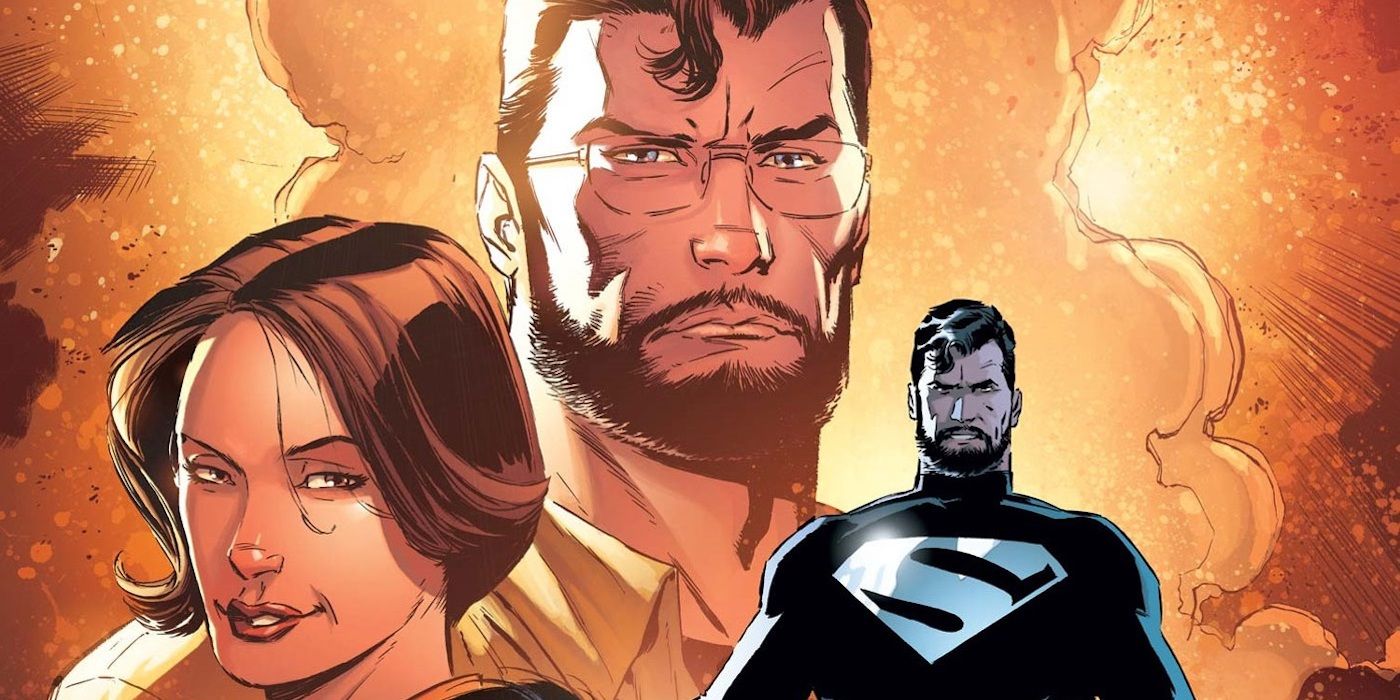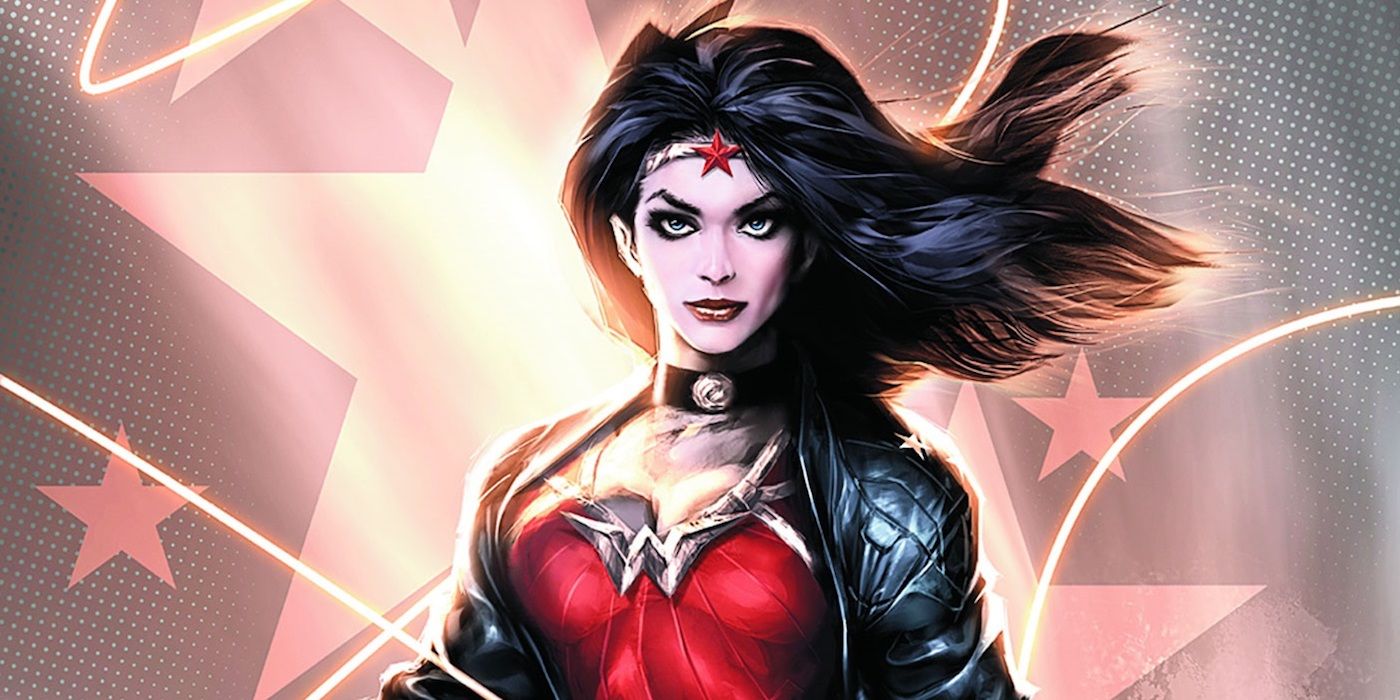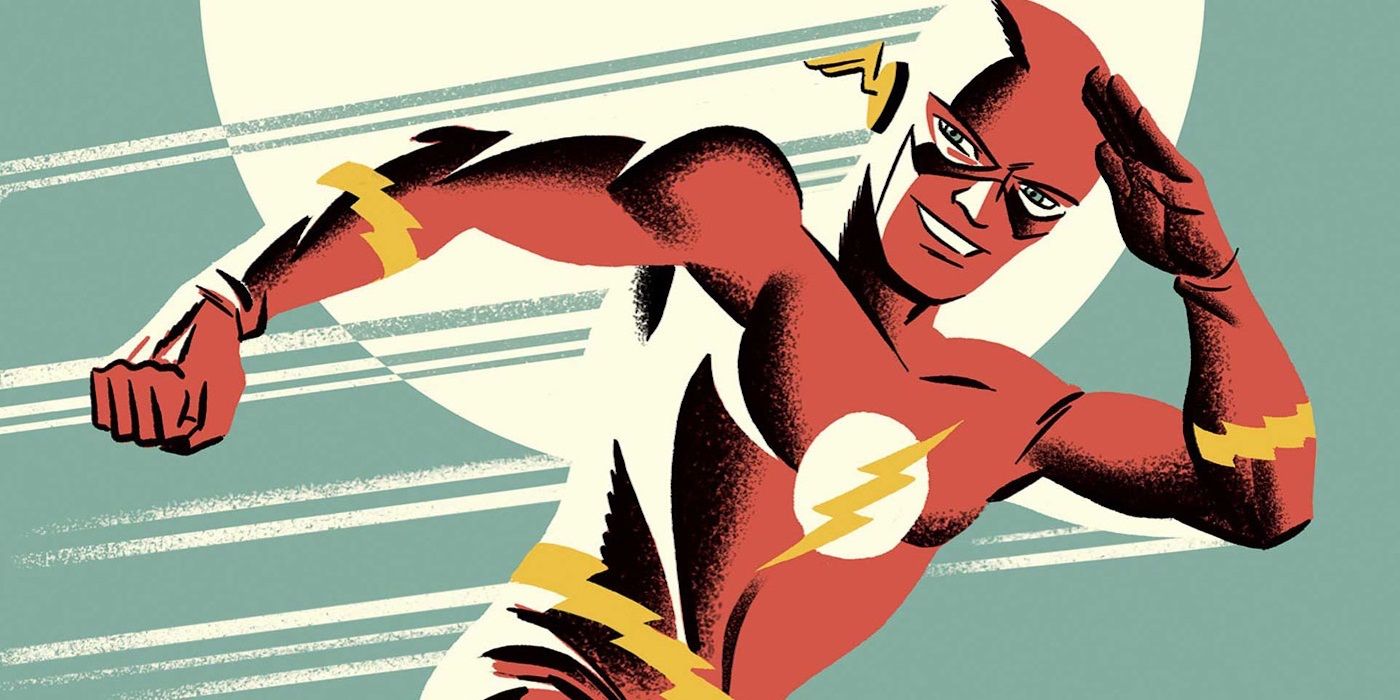In recent years, many of DC Comics' superheroes (and villains) have been reaching their 75th anniversary. The comic company has one of the longest legacies in the industry, and with that long history comes a lot of baggage. The continuity of comics is a beast onto its own, but DC has had severally embarrassingly complex storylines over its many years.
Though it is a herculean task, some of the most confusing stories have been collected in this list and attempted to be explained. This is not necessarily a list of DC’s weirdest tales, but the ones that try their hardest to defy rationalization. For one reason or another, the following storylines are tougher to comprehend than most. There's enough time-travel weirdness with The Flash alone to make your nose bleed, but for the most part, these arcs are backed with some sort of explanation -- if you know where to look.
So without further ado, let’s get this fool’s errand off and running. Here are the 15 Most Confusing DC Comics Storylines, Explained.
15. All-Star Batman and Robin
Frank Miller’s All-Star Batman and Robin is so strange it almost defies description, but we'll give it a go. We've covered some of the comic's craziest details before, whether it's the part where Black Canary and Batman get it on because the former got all hot and heavy watching him murder people, or the bit where young Dick Grayson is forced to eat rats by his new mentor/father figure. Then there's the whole "I'm the goddamn Batman" debacle.
The Dark Knight is not only completely unlikable, but borderline insane in this comic. It’s completely perplexing why a) he is considered a hero at all and b) how he hasn’t just died from sheer stupidity. Miller’s only real justification for his completely off-putting Bats is that a man who dressed up to fight crime should be a little deranged. It's a fair point, but All-Star's Bruce crosses the line from unstable to unbearable.
Miller has also stated that the world of All-Star Batman and Robin takes place in the same continuity as his very well-received The Dark Knight Returns. (Apparently, this is a prequel.) If nothing else, the Caped Crusader's behavior in this arc explains why he is completely alone and miserable by the time that beloved comic rolls around. It explains virtually nothing else that happens, however.
14. Superman & Batman: Generations III
Generations is a bit of an obscure DC Elseworlds tale, but lack of fame doesn’t equate to lack of complexity. Generations does away with the idea of “comic book time", charting Batman and Superman’s first appearances in the 1930s and onward in real time. The pair remain constant as the world around them changes and ages. The Dark Knight exists forever because he becomes the immortal Ra’s al Ghul, and Superman...because he's Superman. It's outlandish, sure, but there is still a very clear narrative.
In third arc of the series, Generations III, the rulebook is completely thrown out. Centuries pass between each of the 12 issues in the arcs. This is disorientating enough, but in the final issues, Darkseid invades and time-travel enters the fray. In the final battle, Batman and Superman are transported back to the 1930s, reminiscent of the first issues from Generations I (because it's the same timeline). When the day is saved, the Man of Steel and the Dark Knight lose centuries worth of memories and start all over again, implying that all of Generations is one big convoluted circle of continuity.
13. Superman: Secret Identity
Superman: Super Identity serves as proof that just because a comic story is complicated doesn’t mean that is necessarily bad. In fact, it may well be one of the best Superman stories ever told -- and without ever really being about Superman.
Super Identity takes place in a world where Supes exists as a fictional character. A teenage boy named Clark Kent is teased for his similarities to the comic book hero growing up, but suddenly, young Clark develops the exact same superpowers as his idol. He then decides to start dressing up as Superman and saving the world in secret. To put the weird icing on the strange cake, Clark even ends up dating and getting married to a woman named Lois.
Secret Identity is a very out-there story, especially since the reason for Clark’s powers aren’t explained until the fourth issue. (Spoiler: it's a meteor shower.) At its core, however, this story really exists as a love letter to Superman fans. It lives out the fantasy of many a comic book reader, which is the entire point of the series, even if it is delivered in a unique and winking way.
12. Flashpoint
As far as time-travel stories go, Geoff Johns' infamous Flashpoint is pretty simple. Barry Allen goes back in time to save his mother from being killed by the Reverse-Flash, and the entire world is thrown out of whack as a result. Barry eventually realizes his mistake and has to let his mother die to restore the timeline to order. Rinse, weep, and repeat.
The complication of Flashpoint is where exactly it sits on the DC timeline. Though it was intended to just be a solo Flash story, Flashpoint was rejiggered to launch an entirely new rebooted DC Universe, the New 52. For years after Flashpoint, the story behind the differences between the New 52 heroes and their classic iterations was explained away by Barry messing with time.
With the next reboot, DC Rebirth, that all changed. Barry had nothing to do with characters disappearing or marriages being erased, as it's Watchman’s Dr. Manhattan who's compressed the timeline and moved things around in the DC universe. While not poorly told (the story itself is a pretty fun adventure), Flashpoint was already a pretty gratuitous way to reboot the entire universe. DC Rebirth has made it even that much more useless and confusing.
11. Final Crisis
Love or hate him, famous DC scribe Grant Morrison is known for making his stories as wacky as possible. Final Crisis might as well be considered Morrison’s magnus opus of convolution. It is simply way too easy to read, and re-read, all seven issues of Final Crisis and not pick up much of what is going on in the series. The perspective of the story and which characters are involved often jumps, not only from page to page, but from panel to panel. There are so many characters involved, and often, the faces you'll see are either very obscure or returning from decades of absence. Barry Allen, in particular, pops up with very little explanation after being "dead" for years.
The basic gist of Final Crisis is that Darkseid invades Earth, and due to his signature anti-life equation, things get very weird and complicated very quickly. The villain is eventually defeated thanks to Superman being able to sing him to death (not a joke). Oh, and Batman dies. Wait, sorry, Batman doesn’t die, he's just sent back in time, but his body is still around looking like a charred skeleton for...reasons.
Honestly, the only person who can truly explain a Grant Morrison comic is Grant Morrison.
10. Grant Morrison (The Comic Book Character)
Though this is another story is written by Grant Morrison, this is somehow easier to explain than Final Crisis. Evidently, while penning his legendary run on Animal Man, the writer decided that telling the adventures of a little-known superhero with a silly name wasn’t enough of a challenge for him, so Morrison decided to write himself into his own comics. It's akin to Stephen King making himself a character in his Dark Tower series, but this one isn't completely terrible and self-aggrandizing.
In the final issues of Morrison’s Animal Man run, Buddy Baker comes face to face with the man who has been writing his adventures for the past 24 installments, a fourth wall break off the highest order. Yet it isn’t obnoxious or even gratuitous. Instead, it's a very honest and touching look at why people love to read and write comics. The creator cameo is also a thought-provoking look at the meaning of reality.
It is undeniably odd, but it also fits in the context of the series. Morrison's Animal Man was about Buddy Baker slowly coming to the realization that he is a comic book character. Morrison's Animal Man is like Deadpool, but with more vegetarianism and fewer dick jokes.
9. Everything about Donna Troy
Wonder Woman has a fair share of confusing elements to her character, especially to her origin story. She has been on many puzzling adventures over the years, but anything peculiar about Diana pales in comparison to her first sidekick, Donna Troy.
Donna, like Wonder Woman, has several different origin stories. While Diana’s many beginnings are reasonable, the story behind Ms. Troy gets more puzzling with each retcon. Donna has been everything from an orphan found and raised on Themyscira as Diana’s younger sister to a creation from part of Wonder Woman’s soul to a young mirror image clone of the Amazonian princess. In the pre-Flashpoint era, it seemed like every couple decades, Donna got a new origin story that completely changed the previous one. In the late 1980s, New Teen Titans even ran a story arc called “Who is Donna Troy?” to clean everything up, but even that was retconned later on.
Eventually, all the separate threads of Donna finally came together, as she was revealed to be an amalgamation of all the Donna Troys across the universe on the spell of dark curse. All her conflicting origin stories were memories of her other lives. It makes sense if you don't think about it.
8. Convergence
Comic book events are usually hit and miss, but it's tough to recall a bigger whiff from recent years than DC's Convergence. The name and premise of the event promised that the long history of DC Comics would be brought back after being wiped away with the New 52 reboot. In reality, none of that ended up happening.
Convergence is a very contained story that involves many characters from the New 52’s Earth-2 coming together to fight a Brainiac rip-off, Telos. The main narrative simply doesn't flow for new or veteran readers. It asks a lot, but gives almost nothing in return, and any traces of fan service were mostly relegated to tie-in issues.
The main point of Convergence was establishing that all previous universes and characters who were ever introduced in the DC Universe still existed after Flashpoint. Yet even this has become rather pointless, because with DC Rebirth, it's seemingly been established that everything has been changing on the whims of Dr. Manhattan. At the time, Convergence was a confusing read, but even within the space of a few years, it's become one big contradiction.
7. The Two Hawkmen
Hawkman is one of DC’s oldest heroes, but he's also one of the most baffling. There is no point in DC’s history and no Hawkman (because there have been several) where the hero isn’t incredibly perplexing. For everyone’s sanity, and to keep things as brief as possible, it's best to look at just two: the first Hawkman, Carter Hall, and the second, Katar Hol. (Original names have never been comics' strong suit.)
Carter Hall is an archaeologist who learns in a past life that he used to be a superpowered Egyptian prince named Khufu. Katar Hol is a winged alien from the planet Thanagar. For a while, the two Hawks existed side-by-side, one coming from the Earth-2 and one from Earth-1. Eventually, DC decided that only one Hawk would remain. This started a process where both Hawkman battled (figuratively) for continuity position for years.
Eventually, around Infinite Crisis, the original Hawkman, Carter Hall, was resurrected. Carter not only had the memories of his past lives, but somehow, he also had the memories of Katar as well. The two Hawks were finally merged into one being in the most perplexing way possible, but hey, at least there's only one of these guys flying around now.
6. Hal Jordan Becoming Parallax
Hal Jordan going from superhero to supervillain is one of the most infamous 180 turns in comic history. Hal’s journey from Green Lantern to Parallax was an unpopular one, largely because of how quickly it happened. His hometown, Coast City, was destroyed during the War of the Supermen arc, and in very quick order, Hal turns from one of DC’s mightiest good guys to its most dangerous supervillain. The fallen hero goes on a killing spree, begins calling himself Parallax, and has to be taken out. It was a disorienting and devastating twist for fans. It also stood unchallenged as a piece of (out-of-character) canon for years.
In 2004, Geoff Johns decided to rewrite the wrongs of the past with Green Lantern: Rebirth. In Rebirth, it is retconned that Hal might have crossed into the dark side, but it was out of his control. Parallax was, in fact, the name of the fear entity that possessed Hal. The hero was saved, and one of DC’s best supervillains was properly introduced.
Green Lantern: Rebirth is the ultimate comics example of making lemons out of lemonade. It just so happens that those lemons were strange, discolored, and had infected fans’ metaphorical mouths with a confusing taste for years.
5. Action Comics #592-593
Just looking at the covers of Action Comics #592 and #593 are enough to leave anyone scratching their heads. The content is so much more incredibly bizarre than any one image can describe. This small arc is better known as the time that Superman and Big Barda, who was married to Mister Miracle at the time, made a porno together.
To everyone’s credit, the pair were under the mind control of the "creatively" named villain Sleez. They didn’t want to make the “adult film” together, but that didn’t stop them from actually doing the deed. The anomalous aspect of this classic story isn’t so much how it happened; Sleez arrives, lives up to his name, and Mister Miracle manages to bring his wife and the Man of Steel to their senses. The real question is why anyone decided that this was a story that needed telling in any form.
It’s not as if a lesson was learned, or that Sleez went on to a long career of villainy afterwards. It didn’t even cause any troubles in Barda and Miracle’s marriage. It just left everyone feeling very dirty and uncomfortable, including the characters.
4. When Power Girl Was (and Wasn't) an Atlantean
While in theory a way to streamline DC's timeline, the Crisis on Infinite Earths event caused more problems than it fixed. One of the big causalities of Crisis was Power Girl. After Crisis, she was no longer the cousin of the main Superman (or any Superman, for that matter). Instead, Power Girl learned that she was an Atlantean. While she kept her superhero moniker, she got a brand new (even more garish) costume, and for decades, she believed that she belonged under the sea in a reverse Little Mermaid situation.
It wouldn’t be until Infinite Crisis, when the original Superman was brought back into continuity, that Kara learned that it was all a trick. Power Girl was under the spell of Altantean, and Kara had indeed been a Kryptonian all along.
Kara’s strange origin mishap might have been fixed, but the damage was still there. Ultimately, DC tried to convince fans for years that one of its most famous Kryptonians was its other non-human race that look exactly like human beings for no real reason.
3. Superman: Lois and Clark
As detailed earlier, Convergence was cluster of confusion, but it did give way to an awesome but equally strange development. While most of Convergence was needless, it did drop the pre-Flashpoint Superman and Lois Lane, with their infant son Jon, into the New 52 universe. This alone is bizarre, but par for the course with comic books.
DC made things extra baffling, though, by establishing in the miniseries Lois and Clark that the family had been there since the beginning of the Justice League. Lois and Clark had been on Earth-1 for nearly a decade, watching another Superman and Justice League come together. Yet Clark didn’t just sit by and act like an average joe. He suited up in the black Supes suit and was secretly helping people the entire time the New 52 Justice League was fighting King Orm, Darkseid, and the rest.
All of this retconning was to set up Clark eventually taking over the mantle when the New 52 Superman died. To make matters even more complicated, with Rebirth, the pre-Flashpoint Superman has gained all the memories of the post-Flashpoint Superman, essentially making them one in the same. But again, as we said with Hawkman, at least there's only one now.
2. Wonder Woman: Odyssey
Unlike most of the other stories on this list, Wonder Woman: Odyssey is not all that confusingly told. Odyssey does drop viewers into the middle of the action, making it seem like readers have missed a few very important chapters, but it tells an otherwise linear narrative. The confusing part of Odyssey is when and why it occurred.
Odyssey was DC’s attempt to reboot Wonder Woman for the umpteenth time. Odyssey did away with all the continuity that had been in the series since Crisis on Infinite Earths, instead opting for a Diana who not only wore pants, but had no connection to anyone she had been interacting for years in the comics. Odyssey feels so disconnected from everything else, it's almost an Elseworlds story -- just one that was supposed to take place in the main continuity.
Odyssey is not only disengaged, it's useless as well. Not long after Odyssey began, the entire DC universe was rebooted with Flashpoint. Nothing about Diana’s new take was carried over to the New 52, not even the pants and motorcycle jacket (thankfully).
1. The End of the Silver Age Flash
The final moments of Barry Allen in Crisis on Infinite Earths are a weird but well-known comic book “death.” The real craziness immediately precedes that heroic sacrifice. For about the last 20 issues of Barry’s original The Flash run, the comic was embroiled in a straight-faced legal drama. Barry was on trial for the murder of the Reverse-Flash, after the latter tried to kill Barry's fiancé.
Things really kick into high gear when the trial wraps up, where it's revealed that Barry’s first wife, who the Reverse-Flash had successfully killed, is alive and well in the future. Iris is revealed to have been sent from the future as a baby. When Iris was murdered, her spirit was called back to the future and she was reborn as a grown woman with all her memories. When Barry is cleared for murder, he retires to the future with his undead first wife.
Barry lives in the future for decades, raising a family with Iris. Barry even periodically showed up in Geoff Johns’ run of Wally West as The Flash, time traveling from the future. It wouldn’t be until after he lived a full life with Iris in the future that Barry would sacrifice himself in Crisis on Infinite Earths. Nose bleeding yet?
--
Have you managed to wrap your head around any of these storylines better than we have? What are your favorite convoluted DC Comics stories? Sound off in the comments section!

